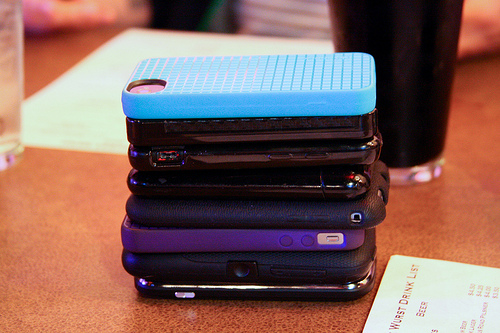It wasn’t that many years ago that people didn’t have a lot of choices when it came to the neat gadgets and devices that they carried around in their pockets. But as new cell phone technologies developed, the 1990s quickly morphed into data plans and mini-computer mobile use, some very different things started happening to what economists might call the ‘consumer landscape’ and what pundits and journalists referred to as our society.
Basically, everybody is staring at little screens to an increasing extent, prompting a lot of analysis and criticism of the effects of technology on anthropology, or in other words, the effects of devices on people. What’s emerging is a picture where quickly updated devices also get adapted into a cultural context by individual users. Enter phone stacking, just one simple example of the ways that we interact with state-of-the-art technologies.
What Is Phone Stacking?
In its simplest form, phone stacking is a kind of party game or common activity where people agree to lay their phones together in a vertical stack. One common version of this game involves a set of people equipped with smart phones or mobile devices sitting down to a meal. The phone stacking activity allows for less intrusion into the human interaction that goes on around the table. In phone stacking, people collectively agree to leave the devices there in the stack. Some forms of the game involve penalties for taking phones out of the stack.
This simple activity, which probably originated as a very informal dinner table request, has caught on in a big way. Blogs like Techcrunch are advocating for more of this type of user behavior, and HuffPo is leading media outlets in outing this game that replaces digital interaction with human interaction.
Likely Effects on Device Industries
As phone stacking becomes more popular, we’re likely to see individual apps that accommodate these kind of games—and we might even see device manufacturers respond to the phenomenon by building more advanced restrictive functionality into their gadgets, in much the same ways that smart phone makers started adding new no-drive restrictions after pressure from the National Highway Traffic Safety Administration and other vehicle safety groups.
If the industry pays attention to phone stacking, as it is likely to, it will show how device makers actually work with their consumer audiences to innovate products and services that they provide. The creation and marketing of a smart phone or tablet doesn’t exist in a vacuum, and sometimes, activities like phone stacking are some of the most powerful feedback that companies get about what people ‘like and don’t like’ about their products. In addition, the future around phone stacking will provide a better look at how families and communities handle the divide between face-to-face and digital connections. At the same time, changes to interfaces and devices have big effects on all kinds of other industries from dented can shops to mosquito control services. So look for new features and apps that take into account the idea that not everyone wants to be digitally connected all of the time.

